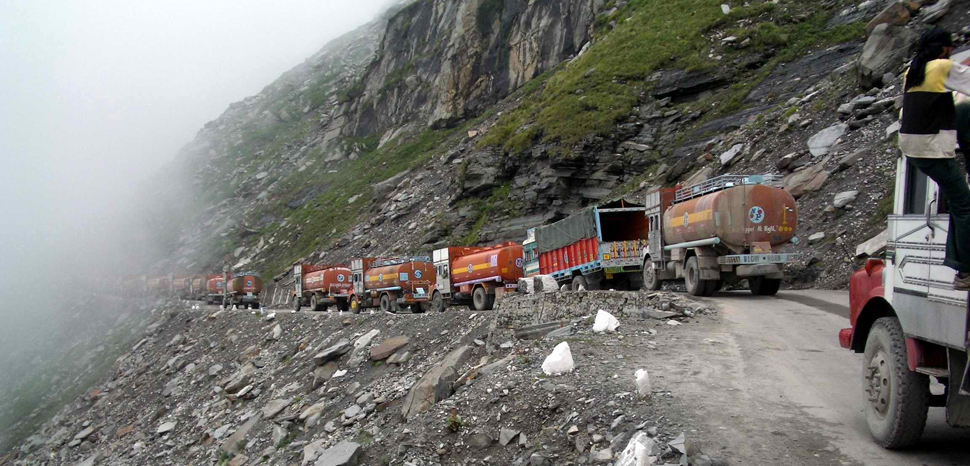Direct, by-land access to Central Asia would be a ‘dream come true’ for India. However, this link has to go through Kashmir, part of which is under Pakistan’s control and currently is being used to convert China’s dream – direct access to Arabian Sea and Indian Ocean – into a reality. Kashmir’s geographic location thus appears to be the geopolitical hotcake for both China and India.
Kashmir as a Geographic Bridge to Central Asia
The importance of Kashmir – which currently falls under the control of three nuclear-powered neighbors, namely China, India and Pakistan – arises from its geographic positioning, particularly in that it shares borders with Afghanistan, a country where South Asia meets Central Asia. Central Asia is a geographic bridge between Europe and other parts of Asia, and a vital geographic component to the Belt and Road Initiative (BRI) and more specifically the China-Pakistan-Economic-Corridor (CPEC).
Besides the benefits of connecting to Europe and elsewhere, there are other advantages in greater access to Central Asia. The region is home to massive energy deposits and other natural resources, including oil, natural gas, non-ferrous metals, gold, uranium, and abundant hydropower resources – exactly what both China and India are craving.
Furthermore, the landlocked region’s consumer markets – with a population of nearly 70 million – are open for exploitation.
Hence, Kashmir’s geographic accessibility to Central Asia – via Afghanistan – makes the geographic positioning of Kashmir very significant.
Kashmir’s Significance in CPEC
Pakistan intends to use infrastructure built under the CPEC initiative to connect ‘directly by-land’ to both China and Central Asia. Moreover, Pakistan wants to take advantage of its geographic positioning by serving as a gateway to Afghanistan – then Central Asia – via the CPEC corridor, part of which runs through Pakistan-controlled Kashmir.
For its part, China wants to secure access to the Arabian Sea and Indian Ocean via CPEC. This would ensure that in the event China were faced with a naval blockade by an enemy navy, its commercial, energy, and military supplies could still flow to China via the CPEC corridor.
Furthermore, China’s access to the Arabian Sea and Indian Ocean would ensure a Chinese naval presence close to India’s south-western waters, both in times of conflict and when peace prevails.
India has already expressed its concerns about the CPEC project on a number of occasions. India’s ambassador to China, Gautam Bambawale, recently remarked in an interview that the CPEC corridor “violates our territorial integrity.” India believes the CPEC project undermines Indian sovereignty because it passes through a Pakistan-administered part of Kashmir that is still claimed by India.
India also fears a potential PLA Navy presence (as mentioned earlier) and – worse – a Chinese naval base in Pakistan’s Gwadar seaport, courtesy of the CPEC corridor.
Kashmir as a Potential Gateway for India
India too has been working with a number of countries on a regional connectivity project – namely the International North-South Transport Corridor (INSTC) – in order to create a trade route linking Afghanistan, Central Asia, Russia, and Europe. However, there’s a problem with this connectivity project.
Unlike China and Pakistan, India is unable to connect ‘directly by-land’ to the destination regions through its International North-South Corridor. Instead, freights from India have to sail through the Arabian Sea to reach Iranian ports, from which they proceed over land.
Access through Iranian ports (mainly Chabahar port) – which would require ships to travel from India to Iran, after which trucks and lorries would carry the consignments to their destinations via mountainous and unfriendly land routes – is time-consuming and way too costly.
Thus, India is surely considering alternatives.
India might have accessed Afghanistan, Central Asia, Russia, and Europe through a direct land route if not for the barrier to such ‘direct by-land’ access: the route has to go through Kashmir, parts of which are not under India’s control.
Pakistan-administered Kashmir stands in between India-administered Kashmir and Afghanistan. Hence, any direct access from India to Afghanistan – and then to Central Asia, Russia, and Europe – has to go through Pakistan-administrated Kashmir.
The opinions, beliefs, and viewpoints expressed by the authors are theirs alone and don’t reflect any official position of Geopoliticalmonitor.com.




